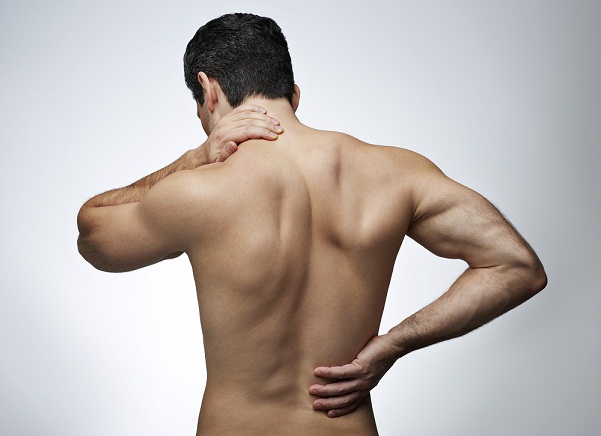Causes of Chronic Back Pain
In America, approximately 80% of people have back pain at some point, with a one-year prevalence rate of 15-20%. Back pain in Seattle and Tacoma is most common among people aged 45 to 64 years of age. Disability related to low back pain is a major cause of lost work time, and it is the most common reason for disability for persons under 45 years of age.
When back pain comes on suddenly and lasts less than six weeks, it is considered acute.
Chronic back pain lasts more than three months.

Repeated heavy lifting and sudden awkward movements strain the spinal ligaments and back muscles. For someone in poor physical condition, constant strain on muscles and ligaments will lead to painful muscle spasms.
Bulging Disc
Between the vertebrae are discs, which serve as cushions and shock absorbers. When a disc bulges out of alignment, or the contents bulge into the spinal canal, it is called a bulging disc. This condition can lead to nerve impingement (pinched nerve), which produces severe pain of the back.
Herniated Disc
Each intervertebral disc contains a jelly-like material called the nucleus. This material consists of quite a bit of water. When the soft material ruptures from a crack in the outer layer (annulus) of the disc, it is considered a herniated disc. The herniated material can press on or irritate a spinal nerve root, causing serious pain and radiculopathy.

Osteoarthritis affects every joint in the body, and for some people, arthritis affects the lower spine (lumbar region). Arthritis of the lumbar spine causes narrowing of the spaces around the spinal cord, which is called spinal stenosis. When the spinal canal, called the vertebral foramen, becomes narrow, the pathway for nerve roots becomes constricted.
Due to swelling, the growth of bone spurs (osteophytes), and damage to the intervertebral discs, chronic back pain occurs. In addition, the facet joints are tiny lubricating joints on each side of the back region of a vertebra. When natural wear and tear breaks the cartilaginous layers of these joints, it is called facet joint arthritis.
Skeletal Irregularities
When the spine curves in an abnormal way, it can produce chronic back pain. Scoliosis is a condition where the spine curves to the side, and kyphosis (humpback) causes chronic upper back pain.
Osteoporosis
With age, the amount of calcium in the bones declines. This lowers the mass (density) of the bones, making them brittle, weak, and porous. Known as osteoporosis, this condition can affect the vertebrae, producing vertebral compression fractures (VCFs) and much back pain.
Degenerative Disc Disease
The discs between each vertebra lose their water content, flexibility, and elasticity, which is related to the natural aging process. This causes a disruption in the delicate relationship among the numerous components of the spine. Called degenerative disc disease (DDD), the breakdown of the discs produces pain when the posterior spinal processes impinge on nerve roots.
Fibromyalgia
Fibromyalgia is a condition characterized by widespread musculoskeletal pain, which is amplified by the way the brain perceives pain sensations and signals. The pain and other symptoms of fibromyalgia can begin following surgery, physical trauma, severe psychological stress, or infection. However, symptoms can develop over time and from no single triggering event.
The top pain clinics in Seattle are Seattle Pain Relief. The Double Board Certified physicians are experts in back pain treatment, and most insurance is accepted.
